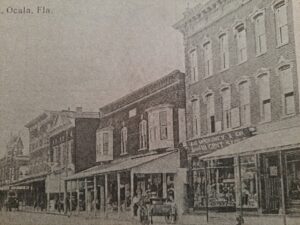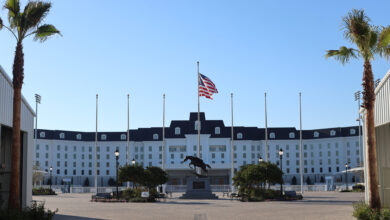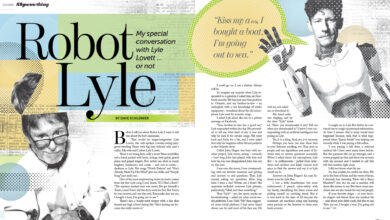
In 1884, a former local Confederate Army colonel took the lead in constructing a new building in downtown Ocala, helping to revive the area following the 1883 Thanksgiving Day fire that destroyed nearly everything on the square.
Col. S.M.G. Gary, who in 1850 relocated to Ocala from South Carolina, became very prominent in the early days of Ocala. He built what is now the office of Blanchard, Merriam, Adel, Kirkland and Green law office, the Gary Block Building on the corner of Broadway and Magnolia. Over the nearly 140 years of its existence, the structure has gone through many different tenants and physical changes.
As for the building’s namesake, Col. Gary was born in Cokesbury, S.C., in 1828 and was a lawyer by profession. He represented Marion County in the Florida secession convention in FEBuary 1861 and commanded a company of infantry at the beginning of the Civil War. After being wounded, he was transferred to cavalry and acted as aide to his brother, who was a general and was present for Lee’s surrender at Appomattox.
Upon returning to Ocala following the war, Gary became an advocate for the planting of citrus trees and is said to have named the famous Parson Brown orange, although official records indicate J.L. Carney named the fruit in 1875. Gary was “Intendant” of Ocala in 1867 when the International Telegraph Company first established wire communication between Gainesville and Ocala. In the first telegraph messages exchanged, Gary sent greetings to the Gainesville mayor, Col. Spencer, who responded in kind.
As intendants were basically mayors and Ocala was incorporated in 1868, this would make Gary Ocala’s first mayor. The first name for mayor in the records of the city clerk, however, is Gary’s brother Dr. Thomas P. Gary, who served the first of several terms starting in 1877.
As for the building that bears Gary’s name, when first constructed it was a three-story structure divided into two sections with a stairway in the middle leading to the upper floors which were used for stock storage and professional offices. The building first housed the Palace Drug Store and the Birdsey & Co. Hardware Store. Then in 1890, the drug store relocated. Future tenants included the New York Life Insurance Co., Florida Hedge and Fence Co., Capital Phosphate Co., various physicians, attorneys and realtors. In 1894, the Ocala Phone Company would occupy the third floor and at one point Ralph’s Hardware, operated by Ralph Lopez, whose family had ties to the cigar manufacturing industry that was so prevalent in Ocala at that time, was a tenant in the building.
The most prominent tenant was McCrory’s, a national five-and-dime variety store that purchased the building in 1929. Originally, the McCrory’s store occupied one half the building while Marion Hardware occupied the other half. Eventually, the hardware store relocated and McCrory’s took over the entire building in 1936, at which time it began renovations to unify the two entrances. By 1937, McCrory’s occupied all three floors, plus an addition in the rear, and in 1948 consolidated a separate building behind it.
In 1969, the complexion of the building forever changed when another fire broke out and destroyed the top two floors. News reports at the time claim around 3,000 people were on hand to witness fire crews extinguish the flames. After the fire, McCrory’s embarked on renovations at the cost of $100,000 but only rebuilt the first two floors. To this day, the building remains a two-story structure.
In 1991, after 62 years in business, McCrory’s closed its doors and the Blanchard law firm later moved in. In 1993, extensive renovations created a more modern look that is present today.






